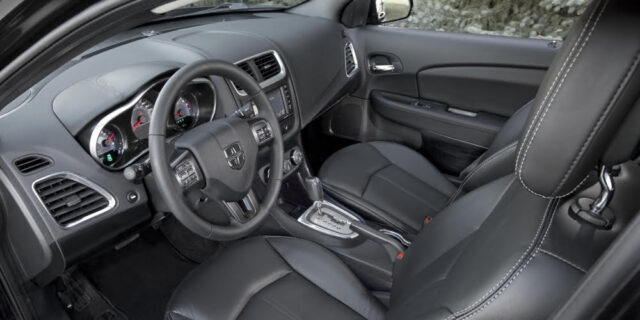No-Spark Troubleshooting Overview
A crank-no-start condition with no spark can stem from something as small as a blown fuse or as serious as a failed PCM driver. This field-tested guide walks Dodge DIYers through the quickest way to confirm spark loss, isolate the affected circuit, and determine when it’s time to call in a scan tool or wiring expert.
- What you’ll learn: How to validate ignition signal, fuel shut-down triggers, and sensor inputs in under 30 minutes.
- Coverage: Works for most Dodge gasoline engines (3.6L Pentastar, 5.7L/6.4L HEMI, 2.4L/2.0L platforms) with COP or coil-pack ignition.
- Prep time: 15 minutes to gather tools, 45–60 minutes for full diagnosis.
Symptom Map & Common DTCs
| Symptom | Typical Codes | Likely Cause | First Checks |
|---|---|---|---|
| No start, tachometer stays at 0 RPM | P0335, P0339 | Crankshaft position sensor circuitry | Back-probe CKP sensor for 5 V reference and AC signal while cranking. |
| Intermittent stall, immediate restart | P0340, P0345 | Cam sensor dropout, timing chain slack | Check CMP connector for oil intrusion; inspect timing marks if noise present. |
| No spark on 1–2 cylinders | P0301-P0306 without fuel codes | Coil driver failure, carbon tracking, faulty COP | Swap ignition coil, inspect plug insulator for tracking, confirm coil command with test light. |
| Crank, injectors disabled | P0688, P0627 | ASD relay, TIPM internal fault | Verify ASD relay click, measure power at coils/injectors; inspect TIPM for corrosion. |
| No spark following major repair | U0100, U0140 | Loose grounds, disconnected PCM plug | Torque ground lugs, reseat PCM/TIPM connectors, clear adaptive memory. |
Tools & Safety Checklist
- OBD-II scan tool with live data & Mode $06$ capability
- Adjustable spark tester or inline ignition tester (set to 35–40 kV)
- 12 V test light and digital multimeter
- Back-probe pins or piercing probes for sensor circuits
- Service information for wiring diagrams and connector views
- Eye protection and insulated gloves when working around ignition coils
Step-by-Step Diagnostic Flow
- Verify the symptom: Use an adjustable spark tester between coil and ground while cranking. No spark confirms ignition failure.
- Scan for codes & data: Record freeze-frame, note RPM while cranking, and check ASD relay status in live data.
- Check power/ground: Key-on, confirm battery voltage at coil B+ feed and solid ground at the coil/TIPM ground path.
- Sensor inputs: Back-probe CKP/CMP for signal output. Without a scan tool, look for tach signal movement and use AC voltage measurement (>0.5 V AC while cranking).
- Trigger signal: Use a test light between coil control and battery positive. A pulsing light while cranking indicates PCM command; no pulse points to PCM/TIPM or wiring.
- Component isolation: Swap coils, inspect plugs, and examine for carbon tracking or coolant/oil contamination in plug wells.
- Security/ASD check: Confirm ASD relay energizes; inspect fuses (M7/M10 TIPM depending on model). Relearn keys if skim light flashes.
Component-Specific Inspections
Crank & Cam Sensors
Most late-model Dodges use Hall-effect CKP/CMP sensors. Look for 5 V reference, sensor ground, and square-wave signal. Resistance tests are unreliable; use oscilloscope or AC voltage while cranking. Heat-soak failures common on 2006–2010 TIPM vehicles.
Coil-On-Plug Assemblies
Inspect for hairline cracks, compromised boots, or moisture. Torque spark plugs to spec (Pentastar 13 lb-ft, HEMI 15 lb-ft) and use dielectric grease sparingly to prevent arc-outs.
TIPM & ASD Relay
Lack of coil power often traces to ASD relay control. Listen for relay click; if absent, jump relay terminals to confirm coil power stage. TIPM corrosion around C4 connector is common on vehicles operated in wet climates.
When to Call a Specialist
- Waveform testing reveals irregular CKP/CMP patterns—possible timing chain stretch or tone-wheel damage.
- No PCM coil command even after confirming sensor inputs and ASD power (may require PCM reflash or replacement).
- Security module (SKIM/WCM) faults preventing ASD enable—requires dealer-level scan tool.
Frequently Asked Questions
Can a bad crank sensor still produce spark?
On most Dodge powertrains the PCM will not fire coils without a valid CKP signal. A failing sensor can be intermittent—heat and vibration may cause the signal to drop out only after warm-up.
Should I replace coil packs in sets?
If the failure is isolated to one cylinder, swapping coils is sufficient for verification. High-mileage 3.6L/5.7L engines often benefit from replacing coils in pairs, especially when boots show tracking or oil saturation.
Does a fuel pump failure mimic no spark?
Yes, but the PCM still fires coils during a fuel issue. Use a spark tester to confirm ignition while monitoring fuel pressure; if spark is present but engine will not start, move to fuel diagnostics.
Need a Dodge Diagnostic Partner?
Compare estimates from vetted mechanics in our Dodge service directory, then subscribe to the maintenance newsletter for seasonal reminders, torque specs, and printable checklists.
